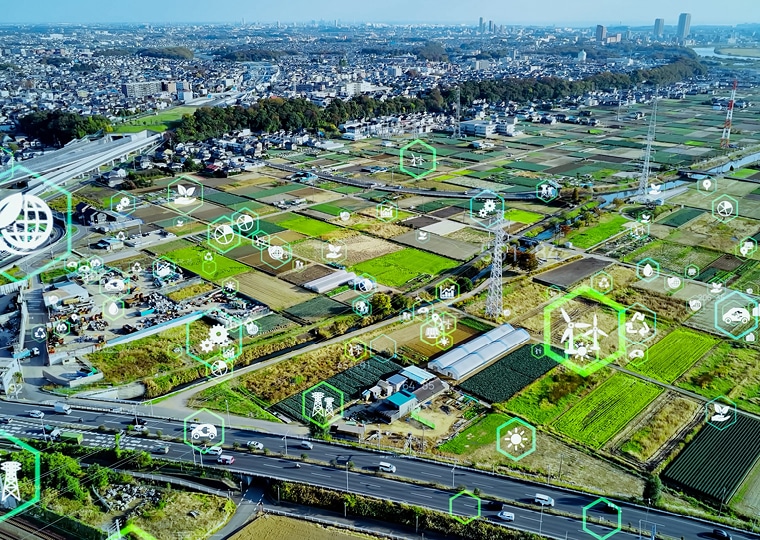In January 2023, the U.S. Departments of Energy, Transportation, Housing and Urban Development and the Environmental Protection Agency jointly released The U.S. National Blueprint for Transportation Decarbonization, a comprehensive strategy aimed at eliminating greenhouse gas emissions from the transportation sector by 2050. As the transportation industry accounts for nearly one-third of domestic greenhouse gas emissions, the blueprint provides a path forward to addressing one of the most significant contributors to climate change. Its focus ranges from improving public transit options and increasing vehicle efficiency to promoting zero-emission vehicles and integrating climate resilience into infrastructure planning.
The blueprint’s importance cannot be overstated: by aligning federal transportation strategies with national decarbonization goals, it sets a framework for achieving a cleaner, more equitable future. Equally important, it recognizes that decarbonization efforts must be accompanied by robust climate resilience strategies to ensure that our transportation systems can withstand the impacts of climate change and avoid the carbon-intensive consequences of repeated disaster recovery. Effective resilience planning not only minimizes these carbon costs but also extends the service life of infrastructure.
Recent Discussions at Mpact
I recently had the opportunity to discuss federal initiatives to accelerate decarbonization and how they intersect with opportunities for resilience capacity building at the Mpact Transit + Community Conference, sharing a panel with Ann Shikany, Deputy Assistant Secretary for Transportation Policy at the U.S. Department of Transportation (USDOT), and other leaders in the field. As part of our discussion, I shared my perspective on how local governments and agencies can implement the principles outlined in the blueprint while integrating climate resilience into their transportation strategies.
An emerging theme from our conversation was that while many agencies are eager to incorporate climate resilience into their projects, the targets and methods for measuring resilience are often ill-defined. This stems from several challenges: uncertainty in climate projections, varying performance requirements depending on transportation mode and criticality, and differing definitions of resilience—whether viewed through a community lens or an infrastructure lens. Additionally, the upfront cost premiums associated with resilience measures can create barriers for agencies. This stems from several challenges: uncertainty in climate projections, varying performance requirements depending on transportation mode and criticality, and differing definitions of resilience—whether viewed through a community lens or an infrastructure lens. Additionally, the upfront cost premiums associated with resilience measures can create barriers for agencies.
Despite these challenges, the blueprint, alongside funding opportunities from programs like PROTECT, offers an unprecedented moment to formalize and standardize resilience efforts across the transportation sector. Furthermore, to stand out in a competitive grant environment, agencies should map out a clear path for tracking progress toward climate resilience goals that complement their decarbonization efforts.
A Resilience Framework for Decarbonization
At STV, we believe climate resilience should be woven into the fabric of every decarbonization strategy, especially as we prepare for increased climate-related disruptions. Here are several key considerations for agencies looking to build resilience into their transportation projects:
- The Earlier, the Better: Resilience planning holds enormous potential for driving positive outcomes for communities. Recognizing this, cities and agencies are establishing resilience policies and planning departments and creating roles like Chief Resilience Officers while performing more robust resilience assessments. The blueprint underscores this proactive approach within its “convenience” pillar, calling for improved community design and land-use planning that considers future conditions.
- Climate-Smart vs. Climate-Proof: The most resilient systems often go unnoticed precisely because they are designed to perform reliably under a wide range of conditions, from extreme heat to severe flooding, without significant disruption. Instead of aiming to “climate-proof” our infrastructure, we should be striving to build systems that are adaptable and capable of evolving as climate conditions change.
- Holistic Performance Metrics: Resilience is not just about fortifying physical infrastructure but also about measuring the success of community-focused outcomes. By developing transparent and measurable targets that account for physical, social, financial and natural domains, agencies can ensure they are building connected communities that are truly climate resilient. These resilience metrics should also align with the programmatic metrics outlined in the USDOT’s 2024-2027 Climate Adaptation Plan.
- Investing Upfront Pays Dividends: Investing in resilience saves money in the long run. For every $1 spent on resilience measures, we save $13 in disaster recovery costs. This not only protects infrastructure but also minimizes the social and economic impact of post-disaster recovery.
At STV, we pride ourselves on being a leader in resilience design and decarbonization strategies. Our dedicated resilience team has been at the forefront of providing innovative resilience planning and design solutions for over 20 years, tackling everything from flood mitigation to wildfire resilience and infrastructure reinforcements for extreme weather. We also have a specialized grants team that works hand-in-hand with agencies to develop funding strategies and craft grant applications that align with federal decarbonization and resilience goals.
By leveraging our expertise, we help clients integrate resilience into every phase of their project, from the planning stage through design and construction. Whether it’s through developing performance metrics for climate resilience or ensuring that communities are prepared for future climate conditions, STV is committed to building infrastructure that not only meets today’s needs but anticipates the challenges of tomorrow.
The U.S. National Blueprint for Transportation Decarbonization presents an opportunity for agencies to rethink how they build and operate transportation systems. With the right strategies, we can create infrastructure that is both sustainable and resilient, ensuring that future generations benefit from the work we do today. At STV, we are ready to help our clients navigate this transformative moment, guiding them toward resilient, decarbonized and equitable transportation solutions.








